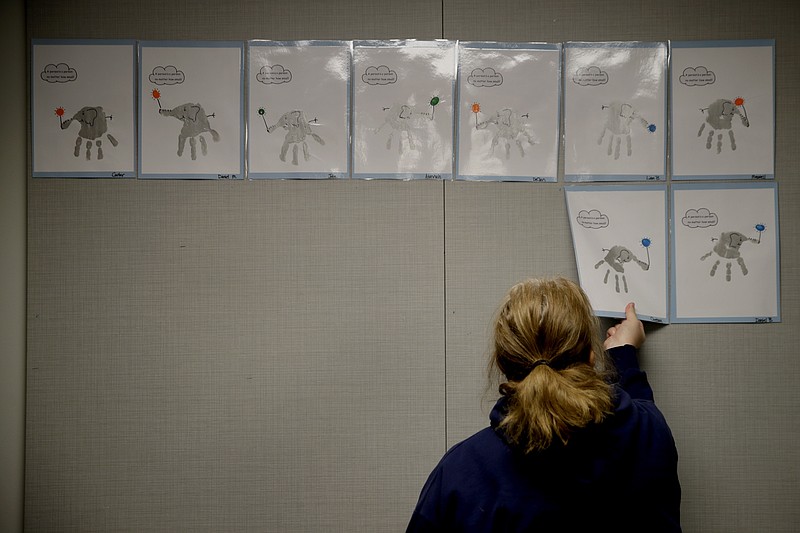As the nation enters a third month of economic devastation, the coronavirus is proving ruinous to state budgets, forcing many governments to consider deep cuts to schools, universities, health care and other basic functions that would have been unthinkable just a few months ago.
Many states expect their revenue to plunge by 15-20 percent because government-ordered lockdowns have wiped out much of the economy and caused tax collections to evaporate. That puts statehouses billions of dollars in the red for the fiscal year that usually begins in July, with no end to the crisis in sight.
Colorado faces a gap of nearly a quarter of the state's general budget. The projected gap in California is more than a fifth of its spending plan and in Oklahoma, a sixth. The governor of Oregon is preparing to cut 17 percent of her budget. Michigan may have to slash up to a quarter of the money it sends to schools.
"There's no crisis we've had that even comes close to this," said Greg Albrecht, chief economist for the Louisiana Legislature. "This is a (Hurricane) Katrina-sized downgrade in the forecast." A forecasting panel slashed the state's income projections by $1 billion because of the virus.
The drumbeat of bad news continued Wednesday as Washington's governor froze most state hiring and called for 15 percent cuts to many parts of the budget. New Jersey announced tax revenue for April was down 60 percent compared with the year before - and it will look worse next month.
The dire projections are coming out as Congress gets ready to debate whether and how to help.
Before the pandemic, most states had generally healthy budget situations and were working on adding to their reserves, which had been built over the decade since the Great Recession. Now state finances are in peril regardless of the actual number of infections. In nearly every state that has estimates, the projected budget gaps are bigger than the emergency savings.
Governors and lawmakers hope for at least a partial bailout from Congress, which is considering a relief package that could provide money to keep teachers in classrooms, parks open and police on the streets. How much Congress and President Donald Trump agree to send is primed to be the next big battle in Washington.
New York Gov. Andrew Cuomo said his state needs $61 billion in federal support "or we will wind up aggravating the situation" by forcing cuts to local governments.
"You know who local governments are? That's police, firefighters. You want me to cut hospitals? Hospitals are the nurses and the doctors who just got us through this and everyone celebrates as heroes. If you don't fund the state, that's who you're cutting in terms of finances," Cuomo said.
One state that stands to survive with minimal cutbacks is South Carolina, where revenue in the $10 billion budget that starts July 1 is expected to be down by perhaps $1 billion - but all of that shortfall was in extra money the state expected to collect in taxes and fees before the pandemic crash.
Utah officials said they may be in a similar situation, with enough reserves to weather the pandemic. And Montana Gov. Steve Bullock, a Democrat, said Wednesday his state is still projecting a surplus a year from now, although smaller than originally planned, and does not anticipate budget cuts.
Montana has the second lowest number of confirmed COVID-19 cases, behind Alaska.
Texas, the nation's second-most populous state, expects revenue to plummet by billions of dollars over the next 14 months. House Speaker Dennis Bonnen has called on state agencies to reduce spending by 5 percent, but the idea has not picked up momentum.
The Center on Budget and Policy Priorities, a nonpartisan but generally left-leaning think tank, projects a cumulative budget gap of $650 billion for state governments through the next two fiscal years. That would more than gobble up most states' reserves as well as the federal aid they have received so far.
The National Governors Association, National League of Cities and bipartisan groups representing local officials also are pressing for federal help.
House Democrats included nearly a third of a $3 trillion aid bill for state and local governments. The plan is scheduled to get its first vote Friday. A bipartisan version expected to be introduced in the Senate calls for $500 billion for governments.
But some lawmakers are reluctant to offer any such general aid.
"We believe additional money sent to the states for 'lost revenue' or without appropriate safeguards will be used to bail out unfunded pensions, reward decades of state mismanagement and incentivize states to become more reliant on federal taxpayers," five GOP senators wrote in a letter to Trump, who has also been wary of what he calls a "bailout" for states.
Lawmakers in Missouri, where Republicans control the Legislature and the governor's office, last week adopted a budget that counts on more federal aid. If it fails to come through, aid to state universities would be cut 10 percent.

